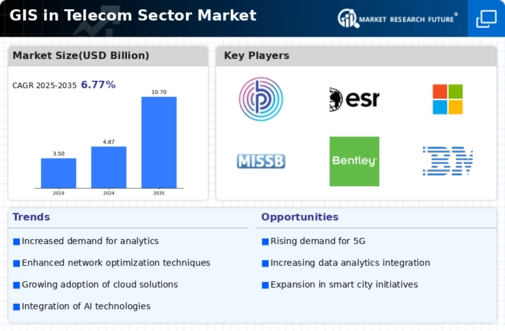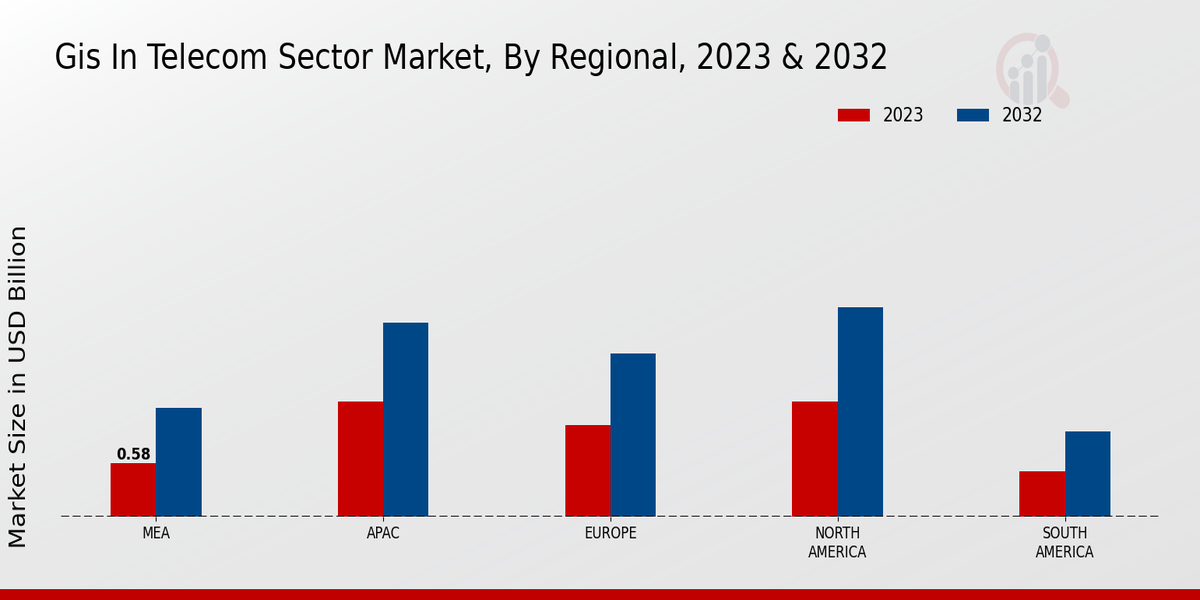Support for Regulatory Compliance
The GIS in Telecom Sector Market is also driven by the need for regulatory compliance. Telecom operators are required to adhere to various regulations concerning data privacy, environmental impact, and service quality. GIS technology assists in ensuring compliance by providing accurate mapping and reporting capabilities. For instance, GIS can help telecom companies track their infrastructure in relation to protected areas or urban development zones, thereby avoiding potential legal issues. As regulatory frameworks become more stringent, the reliance on GIS for compliance purposes is expected to grow, making it an essential tool for telecom operators.
Integration with Smart Technologies
The integration of GIS with smart technologies is emerging as a significant driver in the GIS in Telecom Sector Market. As cities evolve into smart cities, the demand for interconnected systems that utilize GIS for real-time data analysis is increasing. Telecom companies are adopting GIS to facilitate the integration of smart technologies such as IoT devices and sensors, which enhance operational efficiency and service delivery. This trend is supported by data indicating that the smart city market is projected to reach 2.5 trillion dollars by 2025. The synergy between GIS and smart technologies is likely to create new opportunities for telecom operators, enabling them to offer innovative services and solutions.
Rising Demand for 5G Infrastructure
The ongoing rollout of 5G technology is a pivotal driver in the GIS in Telecom Sector Market. As telecom operators expand their networks to accommodate 5G, the need for precise mapping and planning becomes paramount. GIS technology plays a crucial role in identifying optimal locations for new towers and infrastructure, ensuring efficient coverage and service quality. Recent estimates suggest that the global investment in 5G infrastructure could reach over 1 trillion dollars by 2025. This surge in investment necessitates the use of GIS tools to manage and visualize the complex data associated with 5G deployment, thereby enhancing the overall effectiveness of network planning.
Enhanced Data Analytics Capabilities
The GIS in Telecom Sector Market is increasingly benefiting from enhanced data analytics capabilities. Telecom companies are leveraging GIS technology to analyze vast amounts of spatial data, which aids in decision-making processes. This capability allows for improved network optimization, customer segmentation, and targeted marketing strategies. According to recent data, the integration of advanced analytics in GIS applications has led to a 20% increase in operational efficiency for telecom operators. By utilizing GIS tools, companies can visualize data trends and patterns, enabling them to respond swiftly to market demands and customer needs. This trend is likely to continue, as the demand for data-driven insights grows within the telecom sector.
Increased Focus on Customer Experience
In the GIS in Telecom Sector Market, there is a growing emphasis on enhancing customer experience through the use of GIS technology. Telecom companies are utilizing GIS to better understand customer behavior and preferences, which allows for more personalized service offerings. By analyzing geographic data, companies can identify areas with high customer dissatisfaction and take proactive measures to address these issues. This focus on customer-centric strategies is reflected in a reported 15% increase in customer retention rates among firms that have adopted GIS solutions. As competition intensifies, the ability to leverage GIS for improving customer experience is likely to become a critical differentiator in the telecom sector.


















Leave a Comment